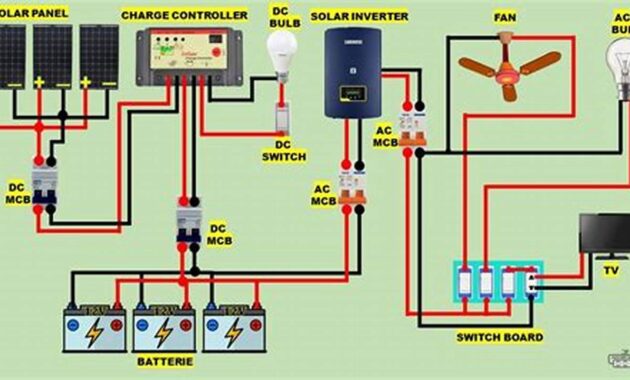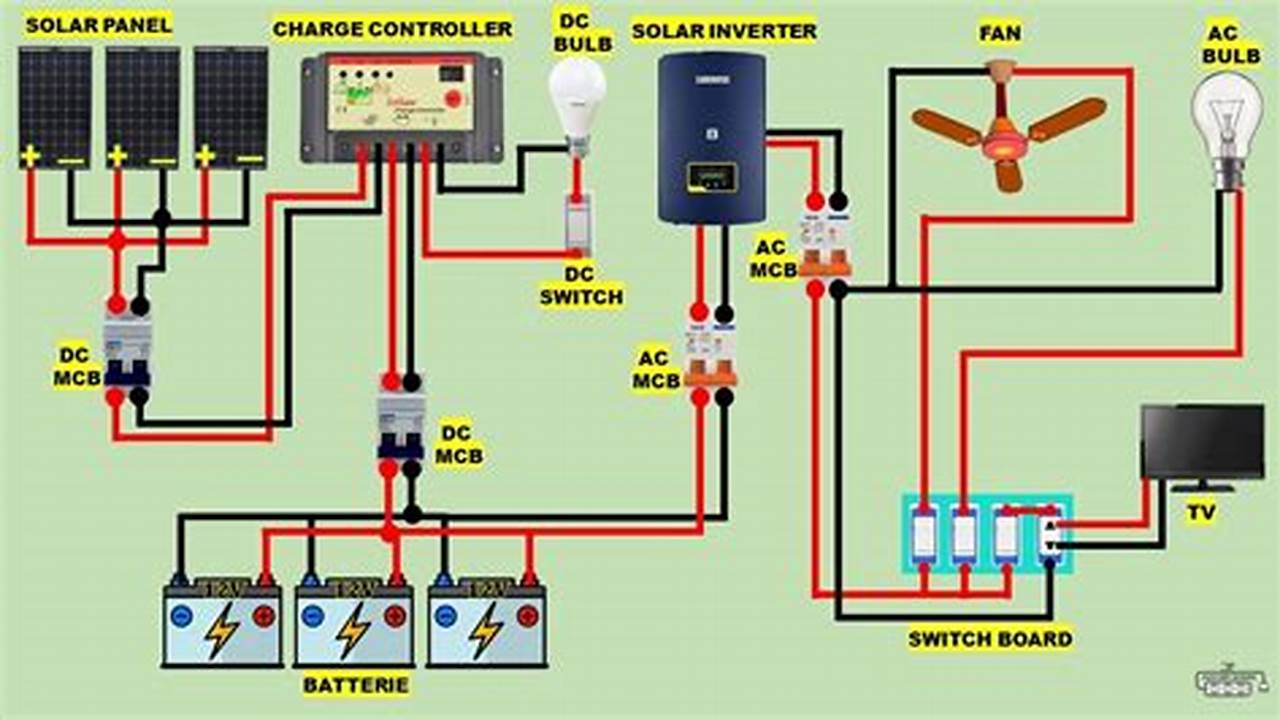
An off-grid solar schematic is a diagram that outlines the components and connections of an off-grid solar power system. Off-grid solar systems provide electricity to homes and businesses that are not connected to the utility grid. These systems typically include solar panels, batteries, an inverter, and a charge controller. The schematic shows how these components are connected together and how they work to generate and store electricity.
Off-grid solar schematics are important because they help to ensure that off-grid solar systems are installed and operated safely and efficiently. They can also be used to troubleshoot problems with the system. Additionally, off-grid solar schematics can help to plan for future expansion of the system.
The main article will discuss the following topics:
- The components of an off-grid solar power system
- How an off-grid solar power system works
- How to design an off-grid solar power system
- How to install an off-grid solar power system
- How to maintain an off-grid solar power system
FAQs on Off-Grid Solar Schematics
This section provides answers to frequently asked questions about off-grid solar schematics.
Question 1: What is an off-grid solar schematic?
An off-grid solar schematic is a diagram that outlines the components and connections of an off-grid solar power system.
Question 2: Why are off-grid solar schematics important?
Off-grid solar schematics are important because they help to ensure that off-grid solar systems are installed and operated safely and efficiently.
Question 3: What are the main components of an off-grid solar power system?
The main components of an off-grid solar power system are solar panels, batteries, an inverter, and a charge controller.
Question 4: How do I design an off-grid solar power system?
To design an off-grid solar power system, you need to determine your electricity needs, select the appropriate components, and size the system accordingly.
Question 5: How do I install an off-grid solar power system?
To install an off-grid solar power system, you will need to mount the solar panels, connect the electrical components, and configure the system.
Question 6: How do I maintain an off-grid solar power system?
To maintain an off-grid solar power system, you will need to clean the solar panels, check the electrical connections, and monitor the system’s performance.
Summary: Off-grid solar schematics are essential for the safe and efficient installation and operation of off-grid solar power systems. By understanding the components and connections of an off-grid solar power system, you can design, install, and maintain a system that meets your electricity needs.
Transition to the next article section: The next section will provide a more detailed overview of the components of an off-grid solar power system.
Tips for Reading and Using Off-Grid Solar Schematics
Off-grid solar schematics are essential for understanding how off-grid solar power systems work and how to install and maintain them. Here are a few tips for reading and using off-grid solar schematics:
Tip 1: Understand the symbols used in the schematic.
Solar schematics use a variety of symbols to represent different components and connections. It is important to understand these symbols in order to interpret the schematic correctly.
Tip 2: Trace the flow of electricity through the schematic.
Once you understand the symbols, you can trace the flow of electricity through the schematic. This will help you to understand how the system works and how the different components are connected.
Tip 3: Identify the critical components of the system.
The critical components of an off-grid solar power system include the solar panels, batteries, inverter, and charge controller. Make sure that you understand how these components work and how they are connected.
Tip 4: Pay attention to the details.
Off-grid solar schematics often include a lot of detail. It is important to pay attention to the details, as they can provide important information about the system.
Tip 5: Don’t be afraid to ask for help.
If you are having trouble understanding an off-grid solar schematic, don’t be afraid to ask for help from a qualified professional.
Summary: By following these tips, you can learn to read and use off-grid solar schematics to design, install, and maintain off-grid solar power systems.
Transition to the article’s conclusion: The conclusion will provide a brief summary of the article and its main points.
Conclusion
Off-grid solar schematics are essential for the safe and efficient design, installation, and maintenance of off-grid solar power systems. By understanding the components and connections of an off-grid solar power system, you can ensure that your system meets your electricity needs and operates reliably for many years to come.
As the world moves towards a more sustainable future, off-grid solar power systems will play an increasingly important role in providing electricity to homes and businesses. Off-grid solar schematics will continue to be an essential tool for the design and installation of these systems.
